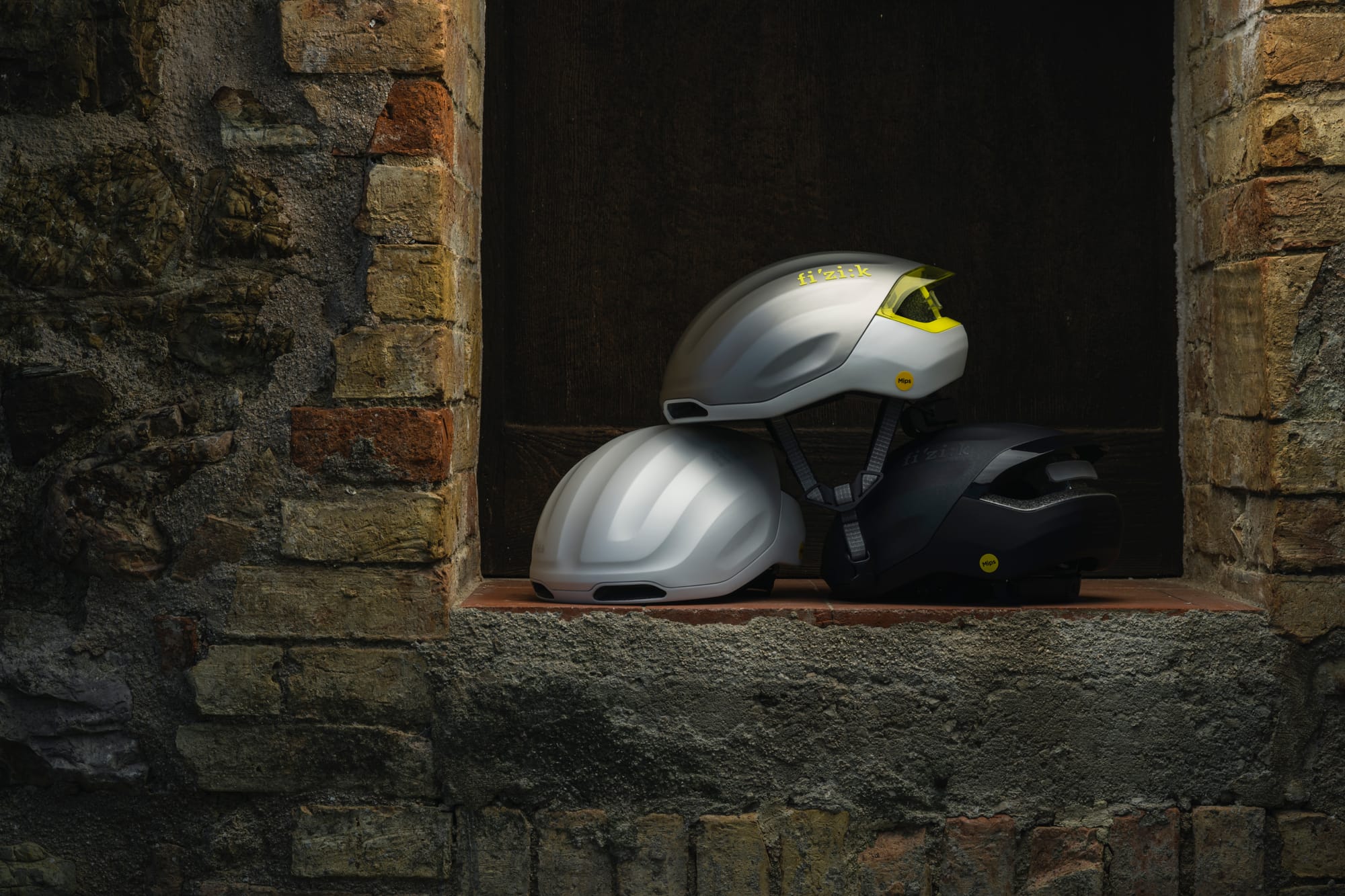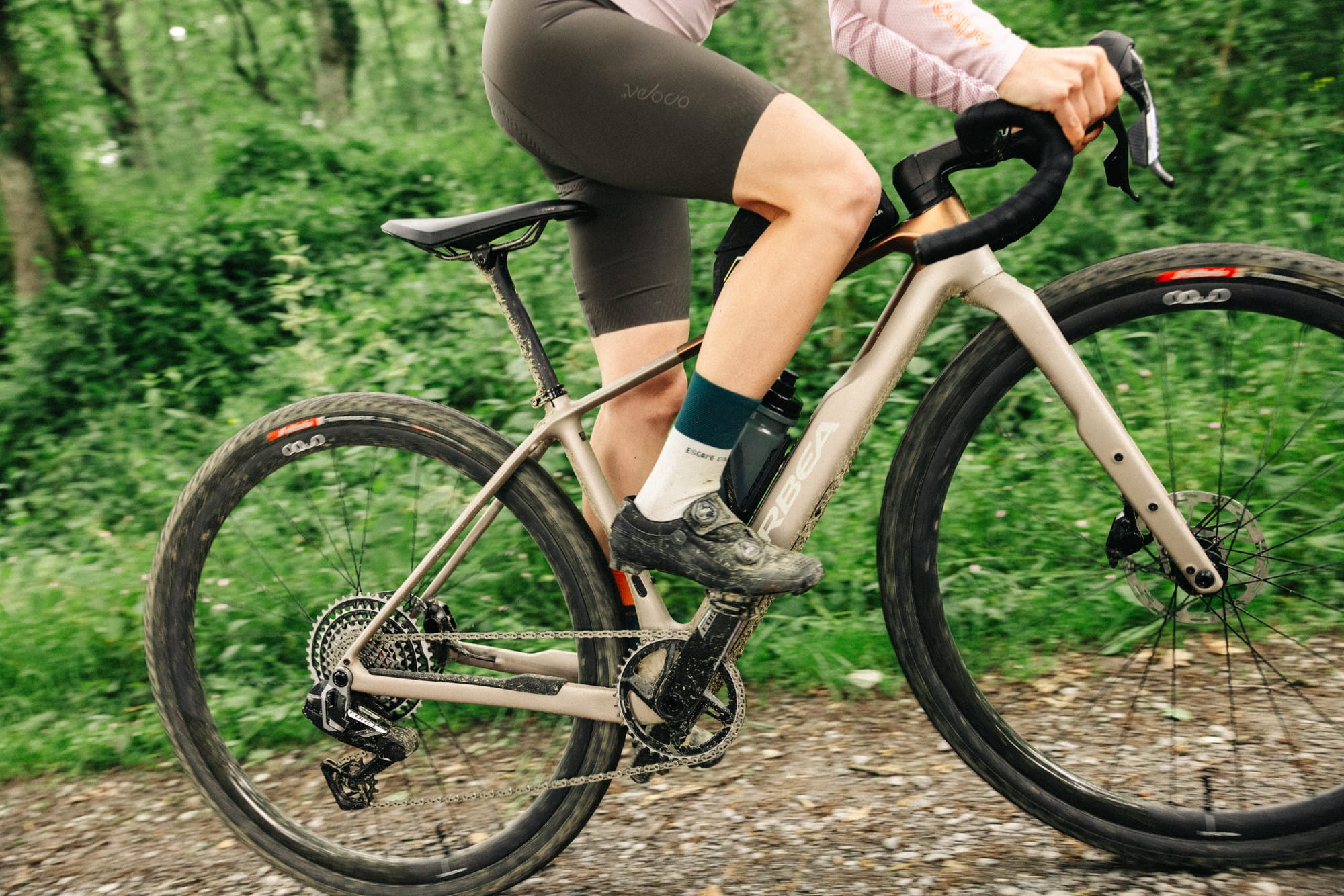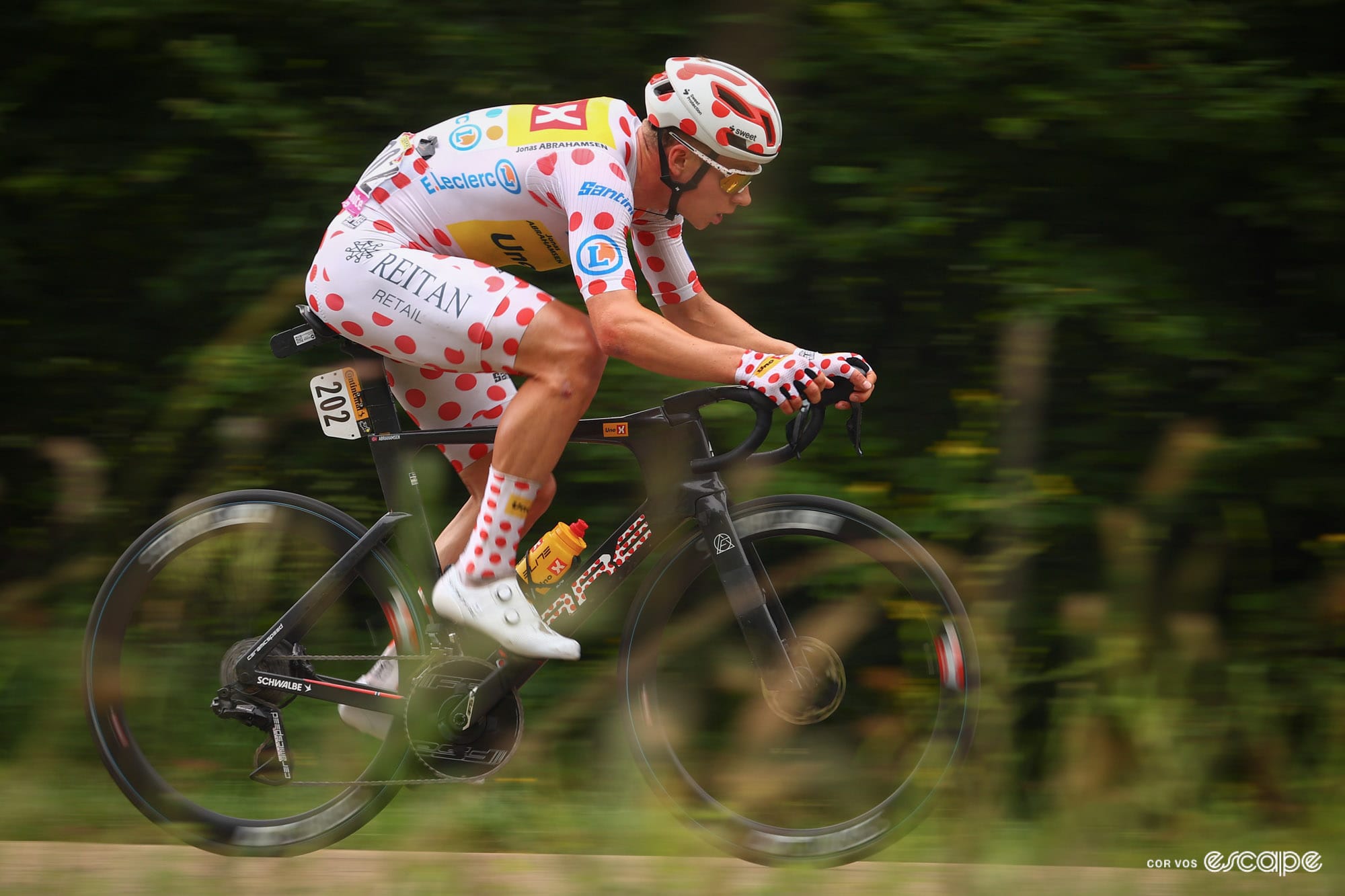All brands follow cycles of product introductions, but the cadence of Fizik's cadence into new areas has been remarkably consistent even by those standards.
The brand spent its initial 14 years from 1996 as a saddle manufacturer before adding shoes to its remit in 2010. Now, Fizik is arguably as recognisable for those shoes as for its saddles. And right on cue, 15 years after that expansion, the brand aims to replicate that success in the helmet market.
Fizik has not exactly kept the new helmet range a secret. The Orbea Factory Racing XC team have been using the latest mountain bike helmet in races, for example, and the brand's PR agency not only seeded photos on various Instagram accounts but made sure media knew about them.
Fizik’s move into helmets is itself as bold as the rollout. The market is already saturated with at least two dozen established brands offering hundreds of tested and verified options. Breaking in is an uphill battle, even for a brand as well-known to cyclists as Fizik.
And rather than launching a single helmet to test the waters, Fizik on Monday unveiled a full range of four helmets: the Kudo and Kudo Aero for the road and gravel, Kassis for trail, and Kunèe for triathlon and TT. Fizik's names are so similar – try saying Kudo/Kassis/Kunèe three times fast after a post-ride beverage – that it's difficult to tell them apart without the helmets in front of you. The decision to start all of the names with a ‘K’ came from a branding perspective; the ‘:K’ comes from Fizik’s preferred ‘spelling’ Fi’z:k, which is used as a shorthand logo.
The helmets are positioned at the premium end of the spectrum, starting at US$200 / £190 / €200 for the mountain bike helmet and US$290 / £270 / €290 for its tarmac-focused siblings. I've spent a brief bit of time now in the road-oriented Kudo helmet; here's what Fizik is introducing and my initial thoughts on it all.
Spec, pricing and availability
The Kudo/Kudo Aero and Kassis helmets share the same sizing convention, using three sizes (S, M, L), claiming to accommodate heads from 52-61 cm. This size range is more restrictive at the small end of the range than other helmets on the market, which in some cases go down to 50 cm.

The Kunèe (TT) comes in only two sizes, a S-M and M-L, covering a smaller range of sizes than the other helmets. The S-M starts at 54 cm with the M-L maxing out at 61 cm. At a claimed 400 grams and 450 grams for the helmet and helmet plus visor, respectively, it weighs the same as the claimed weight for the Giro Aerohead II, which has a considerably larger silhouette, as we'll discuss.
At 297 g in a small, the Kudo I have to test is undoubtedly no featherweight (and comes in 27 grams above its claimed weight). For comparison, Kask’s Mojito 3 is 230 grams, while Specialized’s S-Works Prevail 3 weighs in at 223 grams (all weights are for EN 1078-certified models) and retails for the same price as the Kudo.
Fizik has positioned all the new helmets towards the upper tier of the helmet market, with the Kudo and Kudo Aero set to retail for €290 / £270 / US$290. The Kunée (TT) is €380 / £360 / US$380, and the Kassis (trail) sells for €200 / £190 / US$200. All of them except the Kunèe come with a rear reflector and light as standard; however, these will also be available aftermarket for €29 / £30 / US$30.
Kudo and Kudo Aero
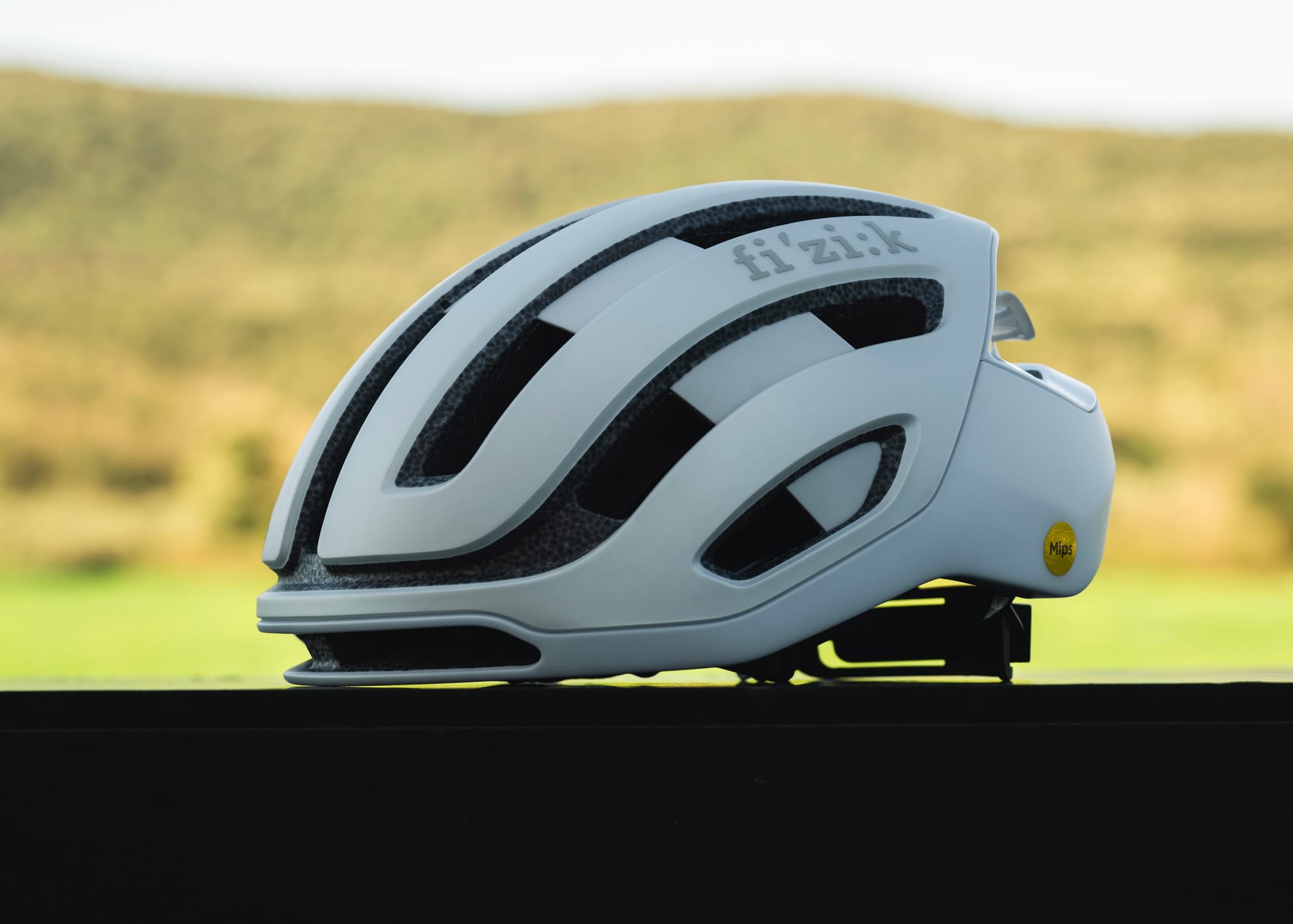
The Kudo and Kudo Aero are the brand's road/XC-oriented offerings. The two helmets share the same silhouette (aside from a small spoiler on the rear of the Aero), which isn’t what we conventionally see from other brands that offer vented and aero helmets.
The vented Kudo sticks pretty closely to conventional helmet design: There are large intake vents, including on the brow, relief channels inside to direct airflow, and generous exhaust vents. Both helmets also accept an integrated rear reflector/light (included).
The styling of the Kudo Aero, by contrast, harks back to the aero helmets of the early 2010s and is heavily reminiscent of Lazer helmets from this era that used clip-on plastic aero shells. But the shell is not removable on the Kudo Aero, and the design similarity to the regular Kudo is on purpose; Fizik believes that's of value to consumers who might want both helmets (although they didn't explain why that would matter). Unlike the standard Kudo, only two small vents remain on the Kudo Aero, located on the brow.
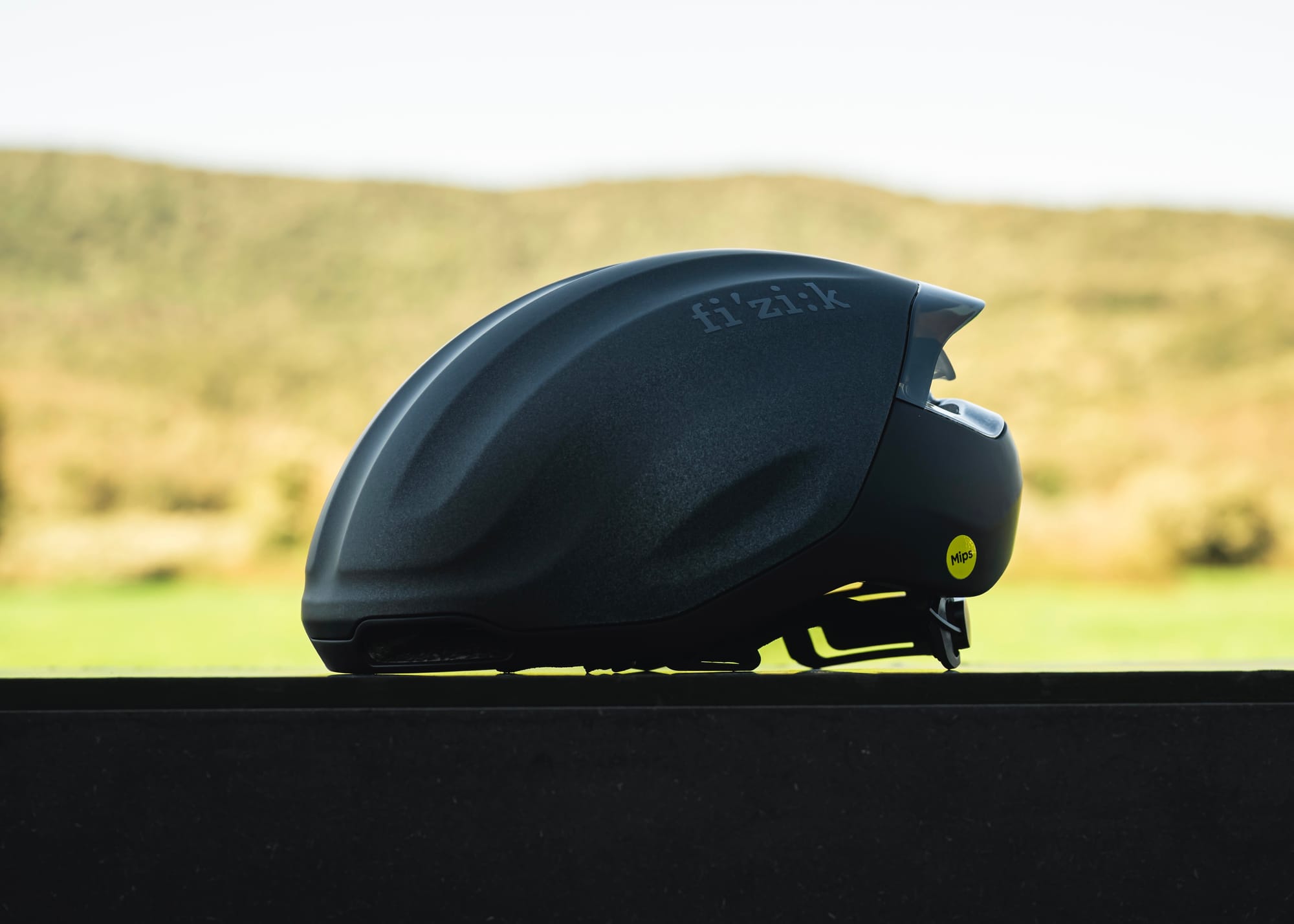
At the rear of the helmet, the Kudo and Kudo Aero share large exhaust vents to encourage a Venturi effect to help draw air through the helmet and cool the head. Removing all of the Kudo Aero's intake vents except the two on the brow was done in the name of maximal aerodynamic efficiency. As Fizik's product manager Alex Locatelli explained, “Some aero helmets have vents. We decided to create a helmet with no compromise regarding aerodynamic efficiency.”
The sentiment is hard to argue with; removing vents (as a general rule) creates a smoother pathway for passing airflow to conform to without the disruption and turbulence caused by vents. But Fizik may have left a lot of aero efficiency on the table by keeping the Kudo Aero's design language so similar to its traditional, vented cousin.
As Xavier Disley of AeroCoach said when I asked his impressions, "Just covering the vents on a standard road helmet will usually make it more aero, but if you’re starting from scratch, it doesn’t have more modern cues such as an elongated tail, ear coverings, strategically placed vents or an integrated visor." For him, the Kudo Aero is "effectively a cover (and) we would expect it not to perform as well as a helmet with all those features." And indeed, most helmet brands have moved past this approach to their aero road helmets.
Fizik made broad claims about the Kudo Aero, like that the rear spoiler is intended to tidy up airflow as it transitions from the helmet to flowing across the rider's back. But the brand didn't share any test results or other data that shed light on that claim, or how its design approach achieved its goals of no aerodynamic compromise. Fizik also didn't provide any data on CFD modeling or wind tunnel testing that would point to the benefits of the spoiler or other features.
And aerodynamics isn't the only performance factor to consider. If you compare the front profile of the Kudo Aero to the Specialized Evade 3, it is clear that the Evade's central vent draws air directly onto the rider's head. That might be slightly slower than an identical helmet without vents (without comparative data, it's impossible to say), but if the Kudo Aero causes an increase in body temperature, this could result in a far higher impact on performance.
Although Fizik is confident that the large vent at the rear should help draw air in through the two brow vents, Locatelli pointed out that the Kudo Aero “can also be used as a winter helmet in some countries," hinting that it might not be as drafty as you would hope.
Again, Fizik's approach is unusual in the current aero helmets category. If you compare aero helmets of brands like Specialized, Trek, Met, and Kask to the vented helmets in their respective ranges, there is a clear difference in profile. So why would Fizik depart from standard industry practice? One possibility is cost. "The way Fizik have done this at least gives riders two distinct options without having to invest too much in moulds if the base design is the same," observed Disley.
Kunèe

If you care about aesthetics, it's hard to take the stance that time trial helmets have become better-looking in the last few years. But it is even harder to argue with the performance gains that the likes of the Giro Aerohead II provide, even if it is safe to say it won’t be winning any fashion awards. Giro isn’t alone; other brands like Rudy Project, Kask and Sweet Protection have also departed from traditional teardrop-shaped TT helmets in favour of larger designs that aim to improve a rider's total aerodynamics.
The Kunèe uses a familiar shape that aligns more with a traditional helmet than the oversized monstrosities littering WorldTour time trials. Even though the helmet looks far more traditional than most modern TT offerings, Fizik claims that “comparable performance is mandatory, especially if we want to work with professional athletes and WorldTour teams. We needed to provide a helmet that can be one of the best in the class in terms of performance.” Once again, with no hard data, this claim is impossible to evaluate, and while Fizik partners with three men's and one women's WorldTeams for saddles, the helmets' April release date means the brand is not a helmet supplier to any of them; it remains to be seen whether that will change.
The decision to stick with the teardrop shape results from two contributing factors, said Locatelli. First, “It's a naturally aerodynamic shape, but it is also much easier to wear." That's a realist's approach to a hard truth of aerodynamics: a position is only fast if you can stay in it, and Fizik is designing its TT helmet not only for cyclists but for triathletes, which is the larger consumer market for these helmets.
Riders who may struggle to hold an aggressive TT position for longer events, like the bike leg of a half-Ironman, may sacrifice some of the gains of class-leading helmets. And Fizik clearly has more than just pro riders in mind here. But there's no tradeoff without compromise, and the Kunèe's stark departure from current thinking in time trial helmets suggests that some aero performance has been forfeited for greater general comfort.
Locatelli was eager to show me the second aero factor: a section with slightly off-vertical corrugated channels on each side of the helmet. As Locatelli explains, “The corrugation in some way helps to separate the air from the body and also simulates bigger helmets.” Fizik says that the helmet was years in the making and went through extensive CFD testing, but again, the company didn't share any of that data.
In an email, Locatelli said Fizik did "extensive benchmark sessions against the main competitor," a model he did not name, and said the data wasn't ready to be shared. Locatelli pointed out that helmet aerodynamics vary based on the rider, in particular their riding position. "To be honest, I don't like the approach to declare a helmet xx% faster than others, because it really depends on the conditions in which the helmet has been tested." That is absolutely true, but Fizik is also making the claim of best-in-class performance, which requires at least some evidence to back up.
Comparing Fizik's design to the larger TT helmets on the market, Locatelli allows that those helmets "are very efficient aerodynamically because they push the air outside the shoulder. It's much more efficient, so we try to think about a solution that provides the same aerodynamic efficiency without creating a bulkier helmet.” Once again, the corrugation may well improve performance over the same design without them, but given the brand has identified that the larger modern TT helmets offer a real advantage, it's worth asking whether the Kunèe has been compromised to appeal to a bigger market rather than to create the absolute fastest product possible.
Cooling on the Kunèe is taken care of by a small vent between the visor and the helmet shell. This aims to channel airflow around the rider's head, with two small exhaust vents positioned at the tail of the helmet. Considering the short duration of use for a time trial helmet, cooling is less of a concern than on the road helmets. But again, there's the key triathlon market. We haven't spent any time in the Kunèe, but without aero data to bolster its claims, Fizik may have trouble convincing athletes to buy what looks like a dated design and which may also be hotter to ride in.
Kassis
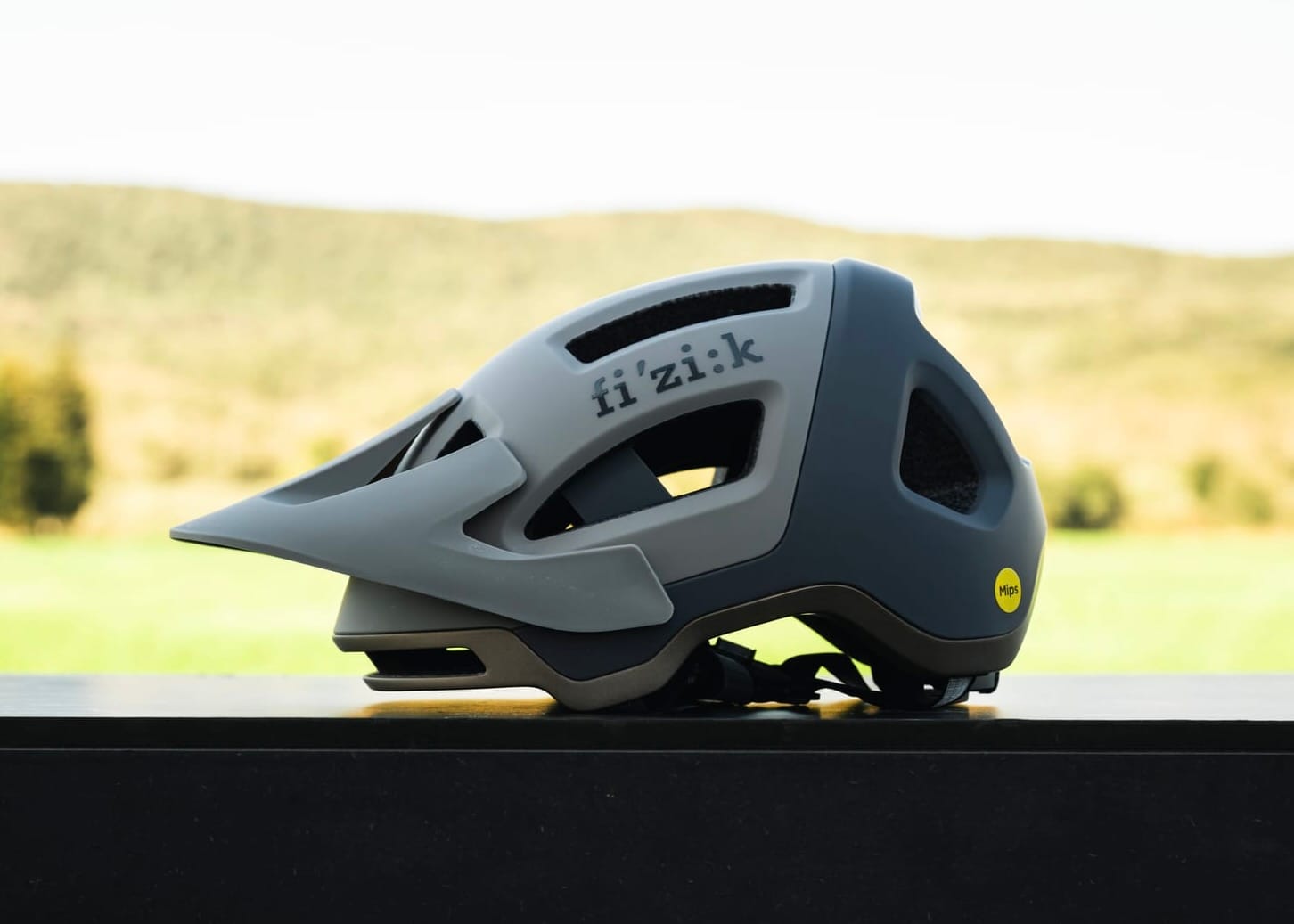
The final helmet in the range is the Kassis trail helmet, which bears a strong family resemblance to the two road-going models. Fizik intends to create a range that shares the same DNA. As you would expect from any modern trail helmet, the extended back provides greater coverage to the rear of the head. At the front of the helmet, a detachable visor heads things up, with the brand claiming it works as a mounting point for action cameras.
At a claimed 360 and 420 grams for the CE and CPSC models in a size M, the Kassis sits just in the ballpark for what you would expect from a premium trail helmet. It's only 5 grams heavier than the CPSC-certified Troy Lee Designs A3 helmet, but competitors like Specialized's Ambush 2 and Giro's Manifest Spherical are either side of 350 grams in a CPSC-approved version. Further, this claimed weight should be taken with a pinch of salt considering the weight of the Kudo I have been using.
Something the Kassis and the Kudo Aero have in common is that the rear vents take care of stowing glasses. The standard Kudo caters for this with the front vents, but for the other helmets that cannot use the front vents, the placement has been incorporated in the design at the rear. This isn't without issues; more on that to come.
Mips Air Node for all but the Kunèe
All helmets except the Kunèe TT helmet use Mips’ latest Air Node system, incorporating rotational impact protection directly into the helmet pads rather than as a plastic liner. The Air Node system is primarily intended for highly ventilated helmets, which makes it perhaps a curious choice for the Kudo Aero.
Locatelli explained, “We could reduce the volume of the total helmet since we don't need to create space for the additional frame.” This is all good and well, but when trying the Kudo on, I felt like it sat a long way out from my ovalish head with a bigger footprint at the sides than I would want, especially from a premium helmet without a traditional Mips liner to blame for its bulk. Using Air Node also saves weight over other Mips systems, which, considering the helmet's relatively high weight even with the technology, is a smart move.
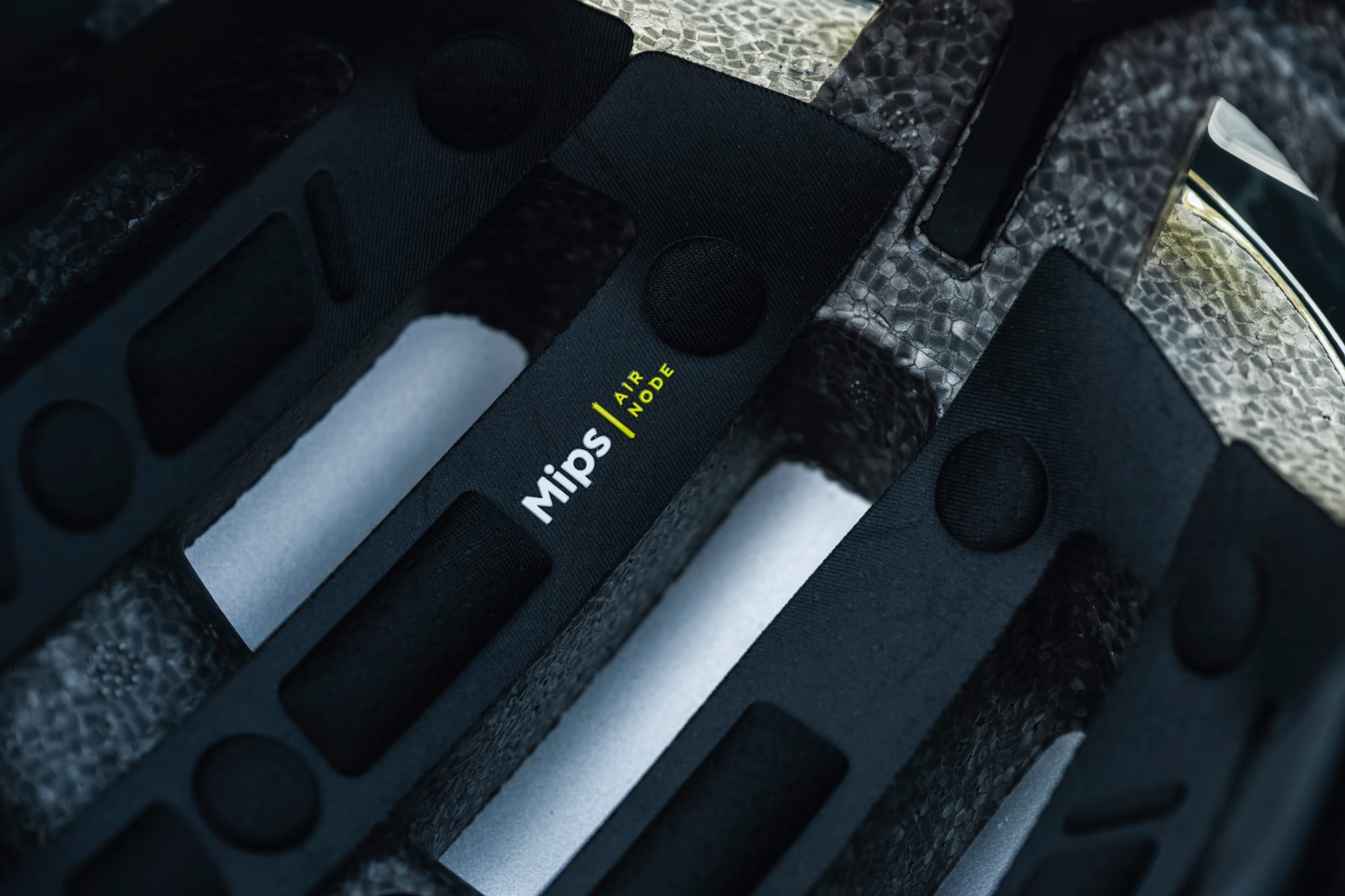
The issue with all helmets with Mips Air Node is that the system is built into the internal padding of the helmet. This makes it difficult to wash and clean the pads as they are more delicate and take more attention to clean. It also means that when the time comes to replace the pads, it is not as simple as replacing standard padding and will come at a higher cost. This exact cost for the Fizik range is not clear, with no answers yet provided on the replacement cost or availability, but other manufacturers that use this system price replacement padding at around €/$30-35 (£25-30), roughly 2-3x the cost of most replacement padding kits.
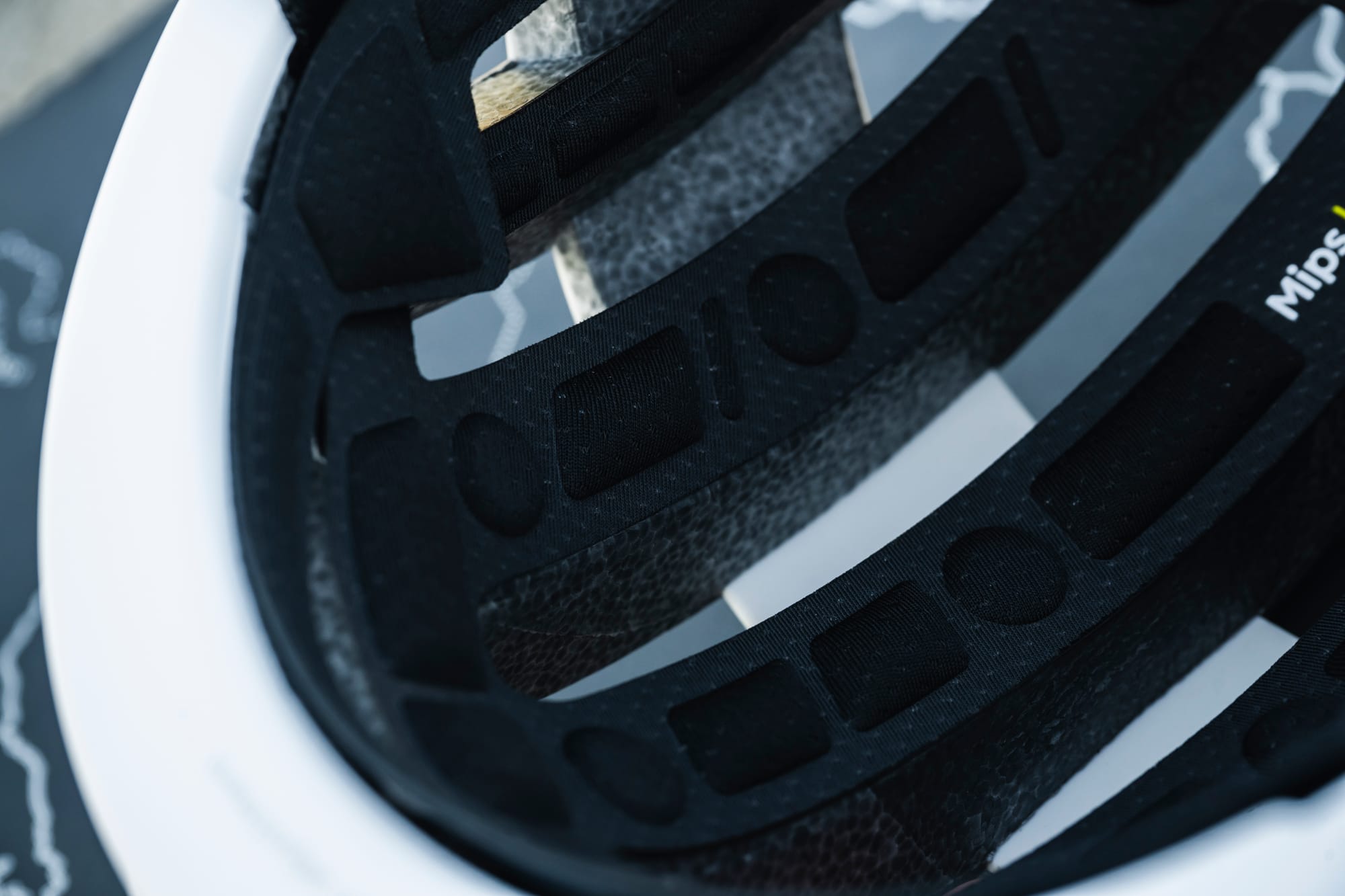
Fizik also claims that all of the helmets have been awarded five stars from Virginia Tech University's independent testing facility. The exact score the helmets have been awarded is not yet visible on the Virginia Tech website, but will likely appear in the next few days.
Crown Fit is genuinely innovative but needs refining
I was more impressed with Crown Fit, Fizik's new retention system. It isn’t that often that something comes along with helmets where the case could be made that a significant portion of the market could be improved by its inclusion, and Crown Fit might meet that bar.
Did we do a good job with this story?

